
Peugeot 308 Review

Introduction
When Peugeot first brought out the current-generation 308, it was a radical departure from the cars that went before. A much more modern-looking car with more up-to-date and – let’s face it – more competent underpinnings, it instantly appealed to customers as an alternative to the Volkswagen Golf and Ford Focus.
Fast forward to the present day and the 308 is approaching the end of its life. But even so, the family hatchback is still a key alternative to rivals from Ford, Vauxhall and VW. A host of minor updates have kept it feeling as modern as possible, but is it still the contender it once was?
Select's rating score* - 3.5 / 5
At a Glance
In short, yes. The basics of family life don’t change, so a good family car will always be a good family car. Especially if the manufacturer is constantly tweaking it to keep up with the latest trends and requirements.
The 308’s still a good-looking hatchback that’s good to drive and better built than you might expect. It’s still well equipped, the engines are economical and the boot is a good size. Everywhere you look, it ticks another box. From the basic Active Premium to the range-topping GT Premium, there’s a version to suit every kind of driver.
But for all that, it doesn’t quite hit the high notes in the way a Ford Focus or a VW Golf can. The package doesn’t come together quite as well and the result is neither as polished nor as appealing. But it comes close, and that, twinned with the car’s likeable character makes it the ideal choice for someone who’s decided the established class leaders aren’t for them – someone who wants to do things differently.
Key Features
The 308 has numerous endearing features, including the big boot and the quietly handsome looks, but to find the really good bits, you have to get behind the wheel. The wheel that isn’t the size you might expect.
Peugeot has decided to keep its steering wheels small in a bid to make its cars feel sportier. It doesn’t really work in a big SUV like the 5008, but lower-slung models make the most of that feature. Whether you like it or not is a personal preference, but it’s definitely a talking point in what might normally be an unremarkable cabin.
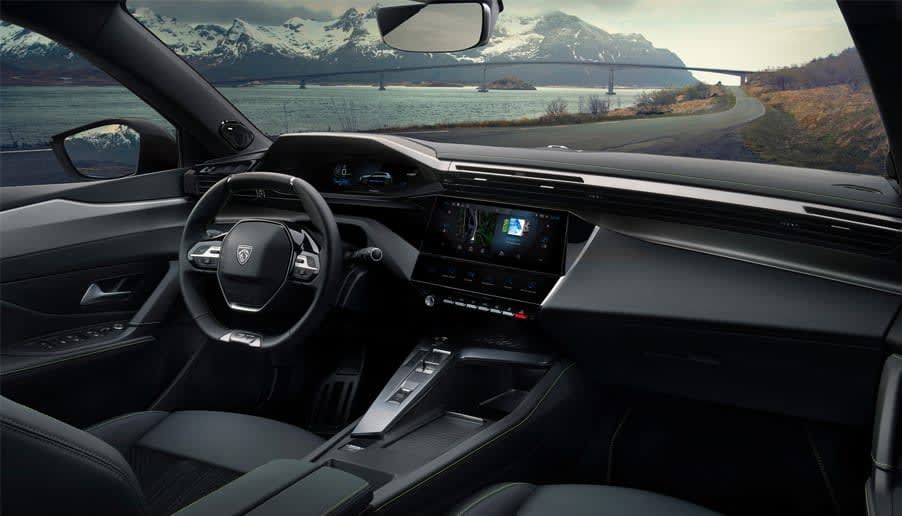
The wheel’s low-down positioning is designed to ensure you can see the other highlight of the 308’s interior – the high-set instrument display. Once an old-school analogue system, it’s now a digital screen that shows you everything you need in one clear display. It isn’t quite the Audi Virtual Cockpit, but it’s a great touch nonetheless.
Performance & Drive
The 308 engine range comprises two petrol engines and one diesel, making our job simpler and making decisions easier for you. The range starts with the 1.2-litre three-cylinder PureTech 110 petrol engine, which as the name suggests, comes with 110hp. Don’t be put off by the small size or the three-cylinder engine block – it’s a smooth but characterful engine and it comes with adequate pulling power. The sprint to 62mph takes an unremarkable but unobjectionable 10 seconds.
If you want a bit more power, you can have the 130hp PureTech 130 engine, which is exactly the same but slightly more powerful. Like the PureTech 110 it comes with a six-speed manual gearbox as standard, but it cuts the 0-62mph time to 9.7 seconds. It’s also available with an eight-speed automatic transmission that isn’t perfect, but it does trim the benchmark acceleration time to 9.4 seconds. It still isn’t rapid, but it’s more than quick enough.
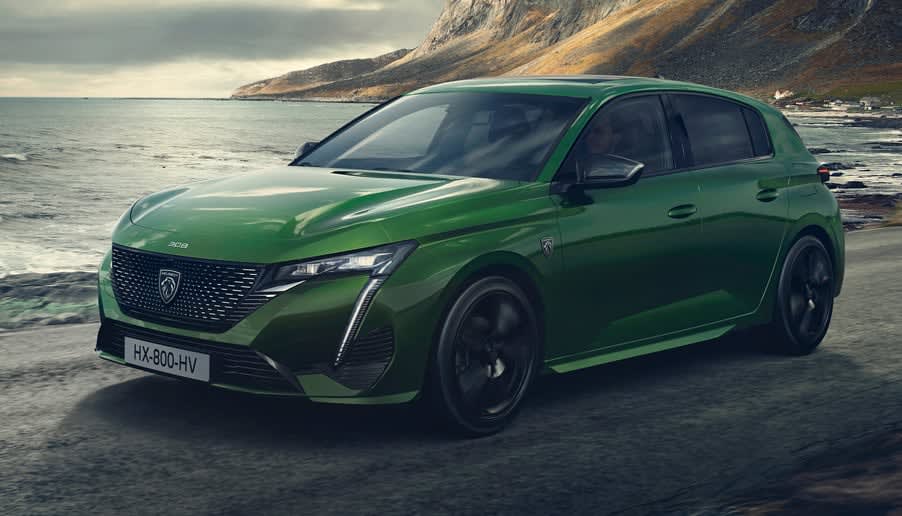
Alternatively, you can go for the 130hp BlueHDi 1.5-litre diesel engine. Offered with a six-speed manual gearbox as standard, it’ll take 9.8 seconds to reach 62mph, while the eight-speed automatic version will do that in 9.4 seconds. The manual is marginally more economical, but not by much.
No matter which engine you choose, the 308 is a surprisingly good car to drive. French cars are renowned for comfort, but the Peugeot finds a good balance between lively handling and a supple ride. It isn’t quite as sharp as a Focus or a Mazda3, but it’s up there with the Seat Leon and VW Golf in terms of handling prowess. The tiny steering wheel helps to make it feel agile, too.
At the same time, though, the 308 deals with potholes quite well. The suspension can be a bit noisy at times and the urban ride is decent, rather than great, but it’s still quite comfortable overall. The supportive, sculpted seats help make long journeys easy.
Light steering and good visibility help make the urban experience pleasant, too, although the eight-speed automatic gearbox can be a bit of a let-down. Sometimes it’s slow on the uptake when you’re pulling out of junctions, and that can get irritating.
Running Costs & Emissions
If you want to keep your fuel bills down, it looks as though there’s only one winner: the 1.5-litre diesel engine. Officially, that 130hp motor will do between 53.5 and 65.6mpg in manual form, while the automatic manages 53.4-64.4mpg. In comparison, the PureTech 110 engine will do between 44.9mpg and 54.9mpg. But that isn’t far behind the diesel, so unless you’re doing regular long journeys, petrol shouldn’t be discounted. Even the PureTech 130 automatic will manage economy in the high 40s.
When it comes to emissions – and therefore company car tax – the diesel is also ahead by a nose. The BlueHDi 130 emits 113-139g of carbon dioxide per kilometre, while the PureTech 110 emits 116-142g/km and the PureTech 130 pumps out 119-147g/km. The diesel may well keep you in a lower tax band, but the lower price tags associated with petrol power could well cancel out that difference.
Interior & Technology
Although French cars aren’t renowned for their quality, Peugeot has upped its game over the past few years. The 308 started this trend, offering a minimalist cabin built with good materials to create a more upmarket feel.
It all looks very stylish, with flowing curves, clean lines and little in the way of buttons. The most obvious departure from the norm is the tiny steering wheel, which is supposed to make the car feel more like a go-kart. Whether that works is debatable, but it certainly gives the 308 a distinctive character.
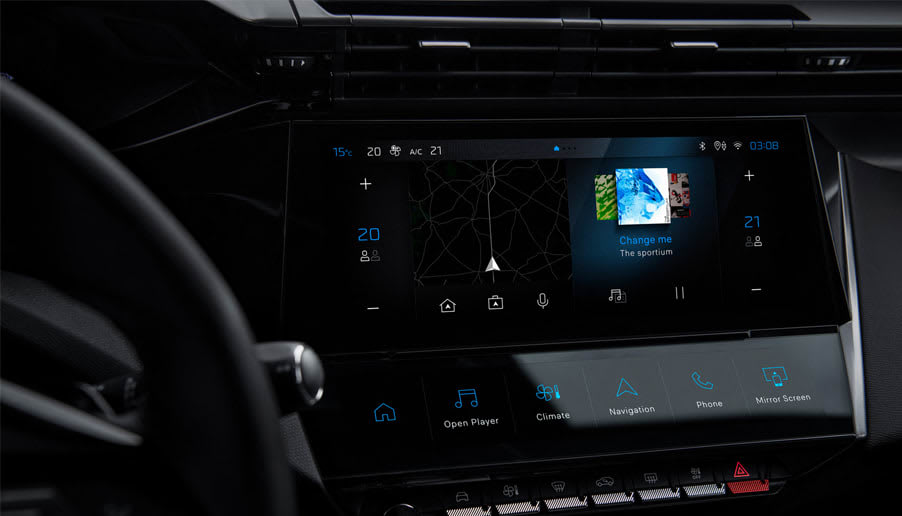
Above the wheel is the digital instrument cluster, which provides a clear readout of your speed and other vital stats. Then, in the centre of the dash is the 9.7-inch touchscreen infotainment system. It isn’t the best-looking touchscreen in the world, but it’s functional and it does the job. The only real complaint is that the system can be slightly slow to respond to your prods, and that’s annoying when it’s the only way of controlling the climate control.
Helpfully, the system is offered with satellite navigation on all but the basic Active Premium model, which is handy. Even better, every version comes with the Android Auto and Apple CarPlay smartphone integration technology, giving you a prettier and more intuitive interface.
Practicality & Boot Space
The 308 has a big boot, measuring 470 litres up to the parcel shelf. That’s way bigger than the 381-litre Volkswagen Golf or the 375-litre Ford Focus, and it’s on a par with the super-spacious Honda Civic. But the 308’s boot doesn’t feel that big. Despite what the figures suggest, it looks fairly average for the segment, and while you’d never call it small, it doesn’t seem to take much more than a Golf.
It’s certainly less spacious in the cabin. The rear seats are fine for kids, but they’re no more than adequate for adults. Headroom is reasonable, but the panoramic roof will cut into that space and legroom is a little tight no matter which version you choose. It definitely feels more budget airline than business class.
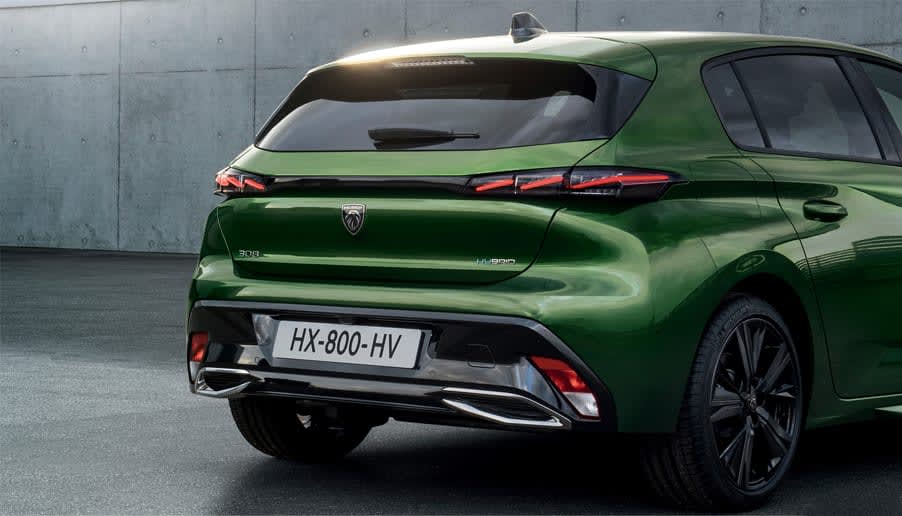
Further forward, things are much better, with plenty of headroom and shoulder room for those in the front. The driving position is generally good, but some drivers will struggle with the small, low-set steering wheel and high-mounted instrument cluster. Whether that set-up suits you will be a personal thing, and you’ll have to try it before you know for sure.
Less of a personal issue is the lack of storage. There’s a decent-sized bin in the centre console, but the glove box is tiny on right-hand-drive cars. It’s so small, in fact, that even getting your gloves inside might be an issue. It isn’t even big enough to hold the car’s handbook.
Safety
The 308 is getting on a bit and it’s soon to be replaced, so the last EuroNCAP crash test was in 2013. That’s relevant because the test has changed slightly, making it harder to draw comparisons with more modern cars. Nevertheless, the 308 cruised to a five-star rating, with an impressive 92% score for adult occupant protection. There’s nothing to suggest it wouldn’t score well again were it to be tested tomorrow.
That’s partly because Peugeot has loaded the car with tech to help keep you safe. All but the basic Active Premium model come with the Safety Plus Pack as standard, giving you automatic emergency braking, lane-keeping assistance and driver attention alert. Allure Premium, GT and GT Premium models also come with adaptive cruise control that maintains a safe distance to the car in front.
Options
The 308 range is quite large, with a choice of five different models. These range from the more basic models, which still have sensible amounts of equipment, to the all-singing, all-dancing top-of-the-range versions, which get a slightly sportier look.
But things kick off with the Active Premium model, which comes with 16-inch alloy wheels, a digital instrument cluster and a big 9.7-inch touchscreen. Rear parking sensors are included as standard, along with two-zone air conditioning, automatic headlights and automatic windscreen wipers. You even get the Android Auto and Apple CarPlay smartphone integration systems thrown in to round out an already-comprehensive list.
Stepping up to the Allure gets you part-leather upholstery and satellite navigation, as well as front parking sensors and a reversing camera. You get some chrome exterior trim, too, and some slightly snazzier alloy wheels. Opting for the Allure Premium only adds keyless entry, push-button ignition and adaptive cruise control.
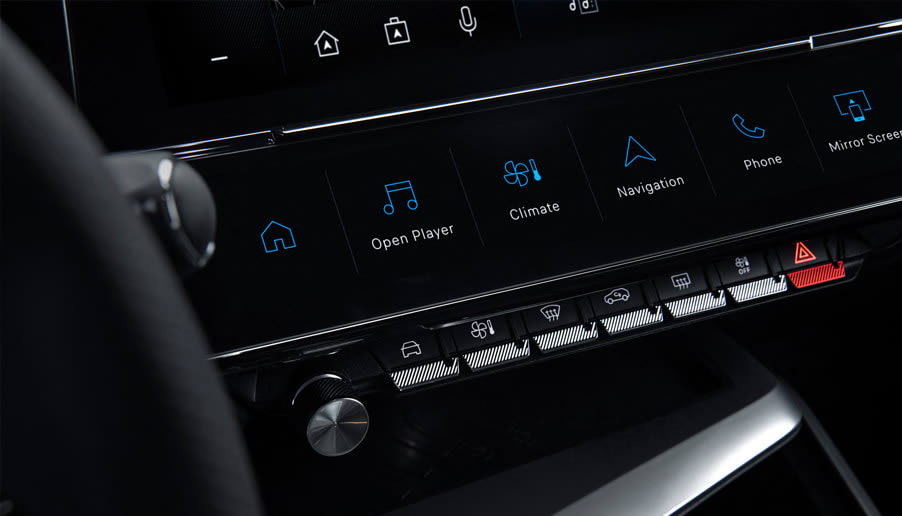
Climbing the rungs to GT spec ups the ante even further. You get the Driver Sport Pack with sharper steering, heightened throttle response and augmented engine sounds piped in through the on-board sound system. Also included are 17-inch alloy wheels, sportier exterior styling and some motorsport-inspired cabin features including aluminium pedals and red contrast stitching. LED headlights are fitted as standard, too.
Finally, the range is capped by the GT Premium model. As with the Allure Premium, it only adds a few gizmos to the model beneath it – in this case 18-inch alloy wheels, Alcantara and leather-effect upholstery and parking assistance tech. Blind-spot monitoring is also thrown in.
The options list is fairly short, but customers can choose leather seats and a panoramic glass roof for GT and GT Premium models, while Allure Premium cars can be specified with LED headlights and ‘scrolling’ front indicators. A reversing camera is also an option for basic Active Premium cars.
There is slightly more choice when it comes to colours, with Bianca White featuring as standard. As an option, customers can choose the Cumulus Grey, Nimbus Grey or Nera Black metallic paints, or they can go for the pearlescent Vertigo Blue, Ultimate Red or Pearlescent White.
Rival Cars
The family hatchback market is huge, and the ageing 308 goes toe-to-toe with some of the most popular models on the new car market. Direct competitors include the recently revamped Volkswagen Golf, the perennially popular Ford Focus and the comfortable, competent Vauxhall Astra. And they’re just three of the big names.
Alternatives include the stylish Seat Leon, which is basically a Golf in a sharper suit, and the practicality- and value-orientated Skoda Scala. The fashion-conscious Renault Megane and the no-nonsense Fiat Tipo also wade into this particular battle, alongside the driver’s favourite, the Mazda3. And that’s before we consider the very worthy Kia Ceed and Hyundai i30. If you want a hybrid, it’s worth looking at the Toyota Corolla, too.
Then there are the premium brands that dip a toe in this part of the car market. Through the wonder of leasing, luxury models can be very competitively priced, so don’t dismiss them out of hand. Consider the sporty BMW 1 Series, the stylish Mercedes-Benz A-Class or even the high-tech Audi A3– you might get one for less than you think.
Verdict & Next Steps
Despite its age, the 308 is still a viable and appealing alternative to the Ford Focus and Volkswagen Golf. If you’ve decided those popular choices simply aren’t your bag, the 308 is well worth a look. It drives well, you get plenty of equipment and despite its foibles, it’s easy to live with. It isn’t perfect, but it’s as likeable as it is competent, and that counts for a lot.
Where to next?
View latest Peugeot 308 leasing deals - guide price from £256.40 per month inc VAT**
Looking for a great deal? Check out our incredible range of car lease deals
Read our latest Reviews and find the right model for you
Want to know more about leasing? Take a look at our comprehensive Leasing Guides
Interested in everything motoring? Why not catch up on all the latest Car Leasing News.
*Score based on Select’s unique meta score analysis, taking into account the UK’s top five leading independent car website reviews of the Peugeot 308
**Correct as of 26/08/2021. Based on 9 months initial payment, 5,000 miles over a 48 month lease. Initial payment equivalent to 9 monthly payments or £2,307.64 Ts and Cs apply. Credit is subject to status.





















